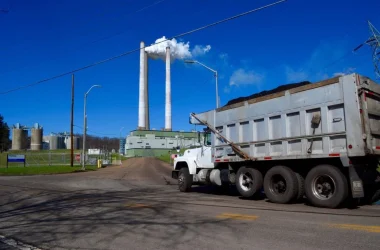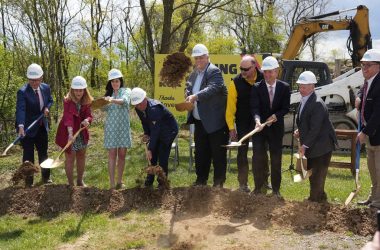PARKERSBURG, W.Va. — The federal Environmental Protection Agency is studying whether additional action is warranted over C8 contamination in the Parkersburg and Vienna water systems, according to a letter to an attorney in the class action lawsuit against the company.
The agency is continuing to study drinking water data from communities, including Vienna and Parkersburg, in the vicinity of the Washington Works plant, Shawn M. Garvin, an EPA regional administrator in Philadelphia, wrote in a letter to Robert Bilott, an attorney representing the plaintiffs in the lawsuit against DuPont over C8 exposure.
Bilott wrote letters to the EPA asking it to intervene because concentrations of C8 greater than 0.1 parts per billion have been found in five of Vienna’s eight water wells. In Parkersburg, tests showed concentrations of 0.072 ppb to 0.013 ppb in three wells, non-quantifiable at two other wells and 0.031 ppb in the finished, treated water.
The EPA short-term health advisory limit is 0.4 ppb, but oher states have set a limit of 0.02 ppb and advised residents not to drink the water with concentrations higher than that.
C8, also known as PFOA, was used at the Washington Works plant by DuPont to make Teflon.
A study by a science panel reviewing the health data from about 70,000 people in the Mid-Ohio Valley found C8 was linked to six diseases; pregnancy-induced hypertension including preeclampsia, testicular cancer, kidney cancer, ulcerative colitis, thyroid disease and high cholesterol.
The company installed carbon filter systems in local water supplies, including Little Hocking and Belpre.
“While EPA moves forward on finalizing the lifetime health advisory level for PFOA, EPA continues to work with state drinking water officials and potentially impacted water systems to gather and review drinking water data in communities located in the vicinity of the Washington Works facility in West Virginia (including Vienna and Parkersburg) and Ohio,” the letter from Garvin said.
“EPA is considering whether any additional immediate response may be necessary to address the risks to persons served by such water systems and potentially impacted private water supplies,” he said. “We will continue these efforts.”
That’s why Vienna has stepped up sampling of the water from the city’s 10 wells, Mayor Randy Rapp said. The city is waiting for the EPA to determine if there will be new levels, Rapp said.
“That’s where we stand. That’s the whole deal,” he said.
The letter from Garvin was received by Bilott on Monday. A spokesman for the EPA regional office was not immediately available for comment Monday.
The EPA is developing an updated lifetime health advisory, which it expects to finalize this spring, Garvin said. The benchmarks are a guide for local governments to make decisions about contaminants that are not federally regulated.
C8 is not regulated.
“Because data reported pursuant to EPA’s Unregulated Contaminant Monitoring Rule … to date shows that a very small percentage of water systems nationally have detected concentrations of PFOA, EPA has and continues to take action to reduce public exposure to PFOA,” Garvin said.
Harry Deitzler, a Vienna attorney also representing the plaintiffs in the C8 class action suit, called the letter “more double-talk.”
“The first sentence sounds like nothing more than a fancy way of saying that EPA continues to sample the water in Vienna and Parkersburg. The second sentence is an incomprehensible dodge for the fact that EPA in New York has already made that ‘additional immediate response’ and told people not to drink water at the concentrations that we see in some Vienna wells,” he said. “The last sentence is confirmation that they are doing nothing of substance and have no excuse that can be put into words.”
In Vermont and New Hampshire, the health departments have set limits of 0.02 ppb while it is 0.100 ppb in New York. Bottled water is being supplied to residents, and a carbon filter system is voluntarily being installed at Hoosick Falls, N.Y., by a chemical company from where the source of the contaminant originates.
The governors of New York, Vermont and New Hampshire earlier this month asked EPA administrator Gina McCarthy to provide uniform guidance in aiding states assessing the safety of drinking water and help and support for additional drinking water testing and analysis in communities exposed to C8.
To read more from the Parkersburg News and Sentinel, subscribe here.




